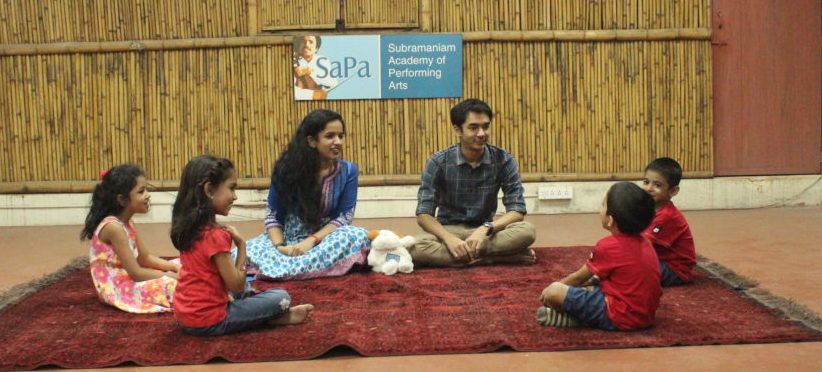From Carnatic vocal to writing lyrics, the Subramaniam Academy of Performing Arts (SaPa)’s new edutech platform teaches various aspects of music and makes it a fun-filled process.
Fancy learning drums from American idol drummer Russ Miller? How about learning Carnatic violin from the world-renowned violinist L Subramaniam, ghazal from Pankaj Udhas and the art of stagecraft from Usha Uthup? Impossible, you say? Well, the makers of Sapa beg to disagree. According to them, these world-famous gurus can come to your drawing room and teach you to sing, play the rhythms or create melodies through a single platform. Subramaniam Academy of Performing Arts (SaPa), a music school run by lyricist Bindu Subramaniam and her brother violinist Ambi Subramaniam has recently launched a new edutech platform to learn music.
Founded in 2007, by their parents, L Subramaniam and Bollywood playback singer Kavita Krishnamurti Subramaniam, SaPa is aiming to coach budding talent with self-paced courses by world-renowned musicians. There are live classes and recorded video classes on Carnatic vocal, Carnatic violin, mridangam, konnakol, Hindustani vocal, western vocal, piano and songwriting apart from masterclasses by celebrated artists on specific subjects.
Kavita Krishnamurti, Carnatic vocalist Kanchana S. Shruthiranjani, bhajan singer Anup Jalota, Carnatic fusion singer Mahesh Raghvan, musician Shantanu Moitra, Tabla player Pt. Tanmoy Bose, percussionist Akshay Anantapadmanabhan along with Bindu and Ambi also conduct various courses on this edutech platform.
Learning is fun
“Innovation makes classical music great. As music continues to grow and develop, it needs to keep in pace with contemporary times. Last year, SaPa classes went online. We included elements of social-emotional learning to help students cope with uncertainty and lack of community time. This edutech platform is an extension to that, says Bindu, CEO, SaPa.
SaPa also aims to make music learning a fun experience. In addition to video lessons, each course will include reading material, widgets, quizzes, games, and more.
The curriculum is designed in such a way that the classes include a lot of fun-filled activities. “Students and teachers play games using hand gestures and make repetition entertaining while reinforcing concepts,” points out Ambi who is the CIO. The platform also has inbuilt instruments including metronomes, tuner, tambura and a few fun games that will enhance the skills. “These elements enhance learning. Once they enjoy it, we don’t have to push them to practice,” he adds.
Keeping up with times
Music learning has gone through myriad changes. “I learned music differently from how my father has learned. My daughter learns in an entirely new fashion. Only the method varies. However, the lessons are the same, ” adds Ambi.
Sapa also believes in inclusive learning. “We respect all gurus and their various pathatharams(systems). It is how music grows. History has taught us that. Any artist can come and share their lineage and musical knowledge on our platform,” he says.
Music should not be compartmentalised. Resonates Bindu, “for instance, Muthuswami Dikshitar, in his time, was one of the most open-minded musicians. He might be one of the first fusion musicians. In spite of being classical, he took in ideas from other streams including western notes, Hindustani dhrupad and assimilated them to the Carnatic system. Hindustani music system has taken a lot of ideas from Carnatic rhythms and ragas.”
A few years ago, to foster social and emotional learning through music among school children, the academy has started ‘SaPa in Schools’. Partnering with the Norwegian Academy of Music, the project provides what its organisers call “structured music education”. Through songs, they teach school students music, introducing them to various cultures, languages and traditions. “We have a ‘music and the world around’ component, which connects music to social change, history, science, math, and more,” says Ambi.
‘SaPa in Schools’ works with 100 schools each year and has reached 100,000 children across India already.

